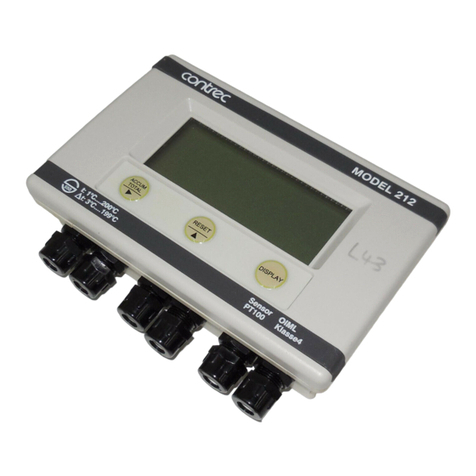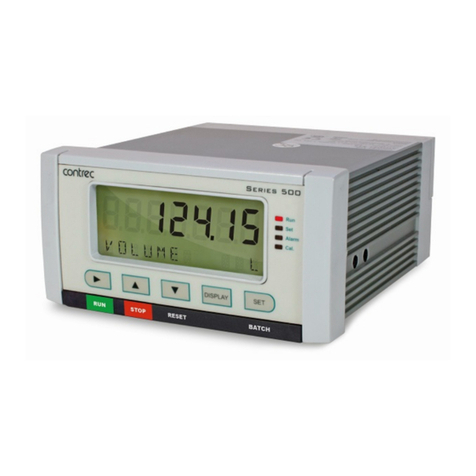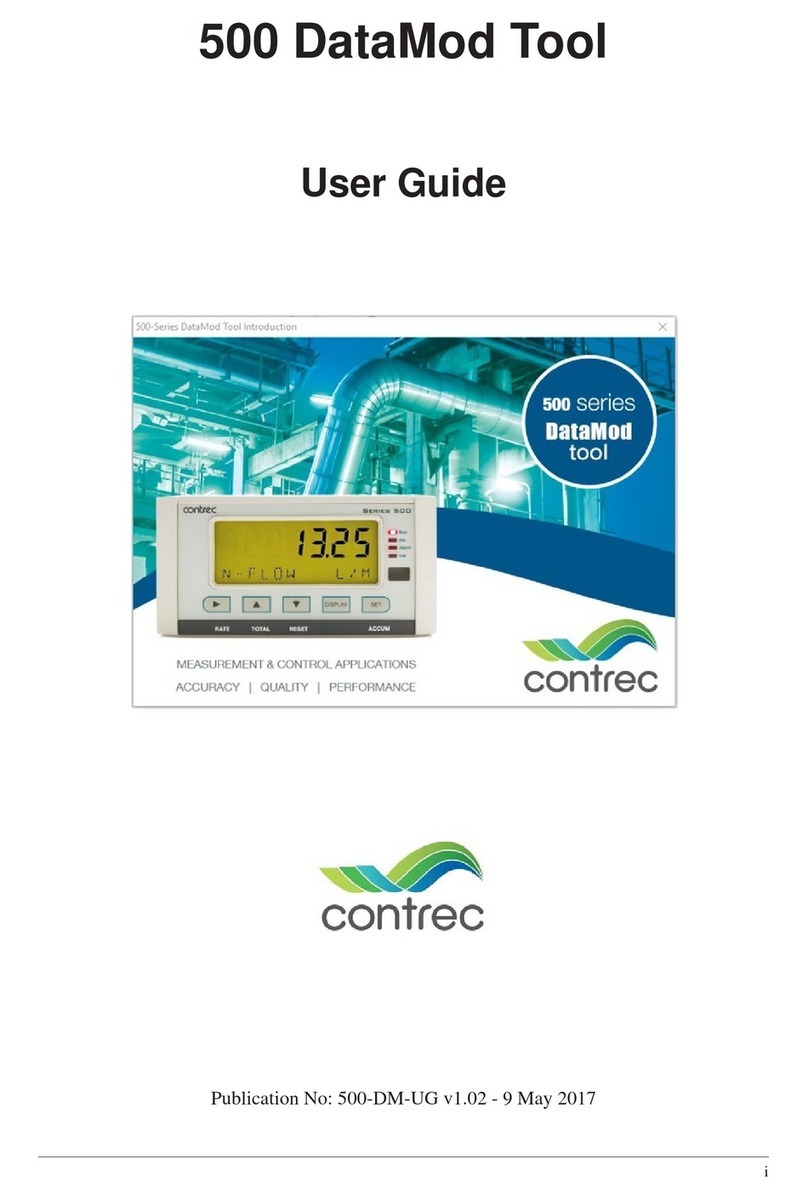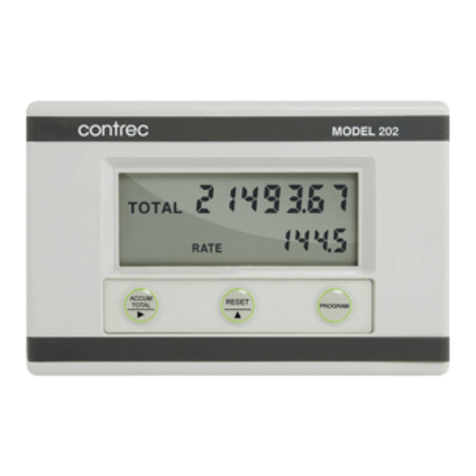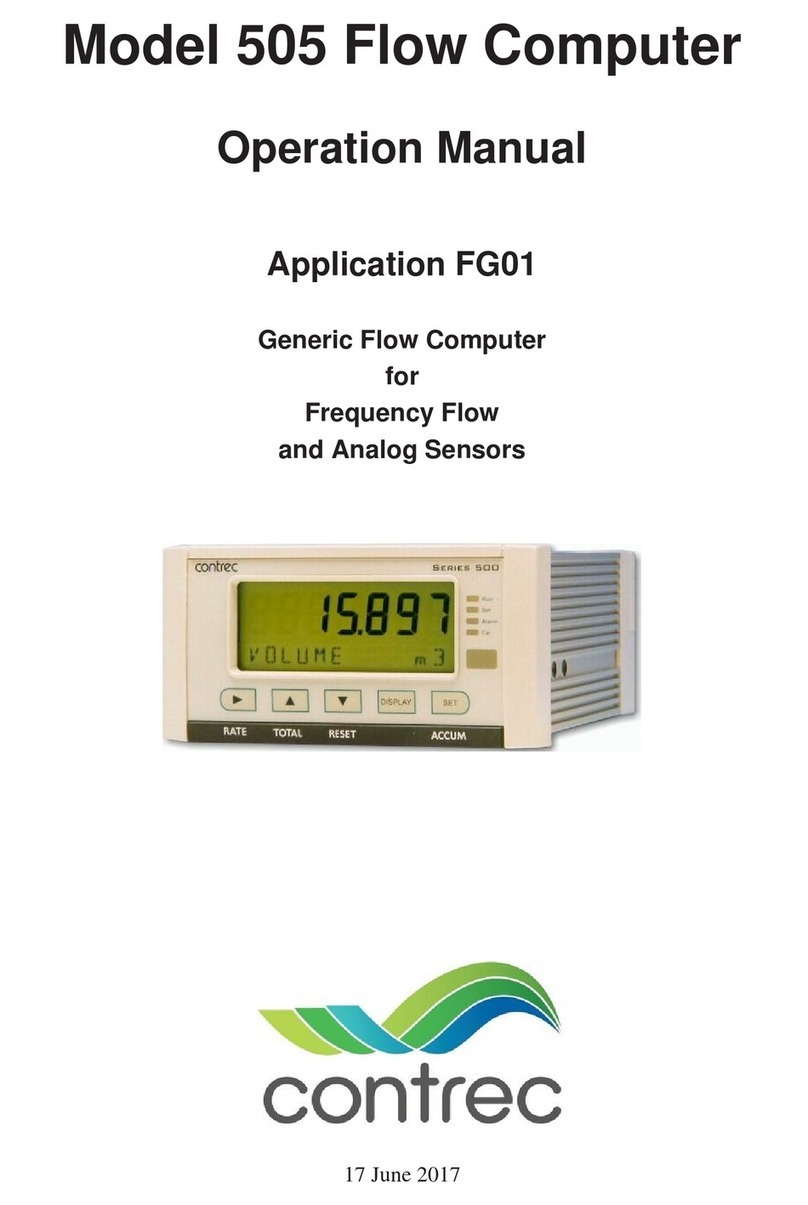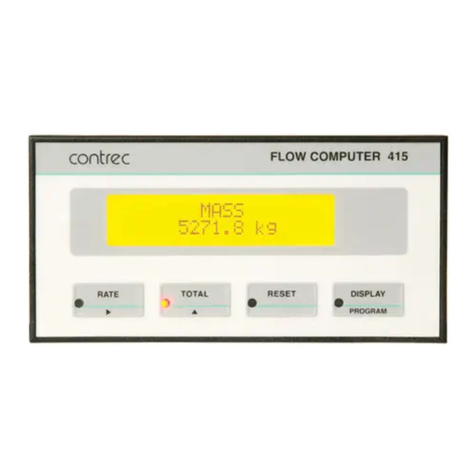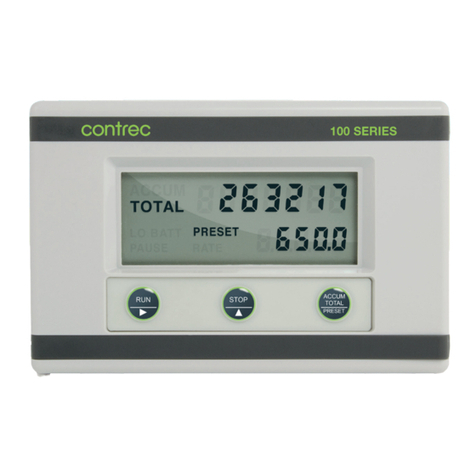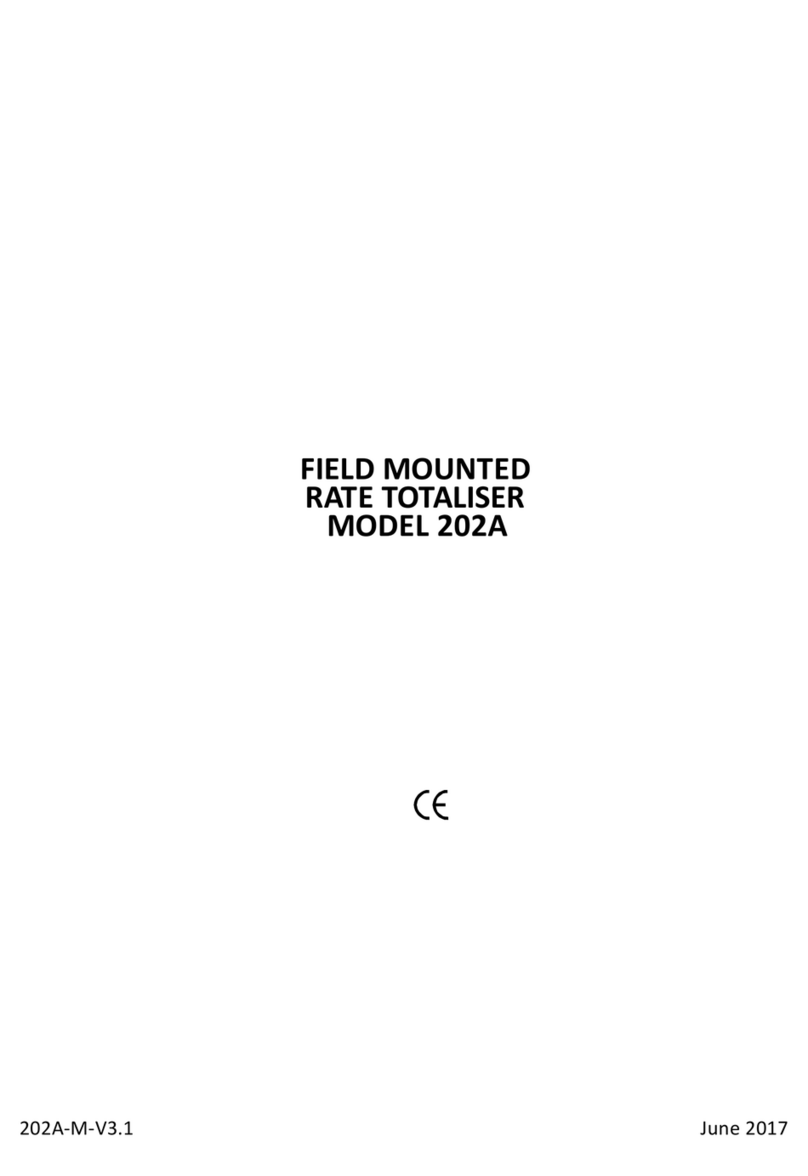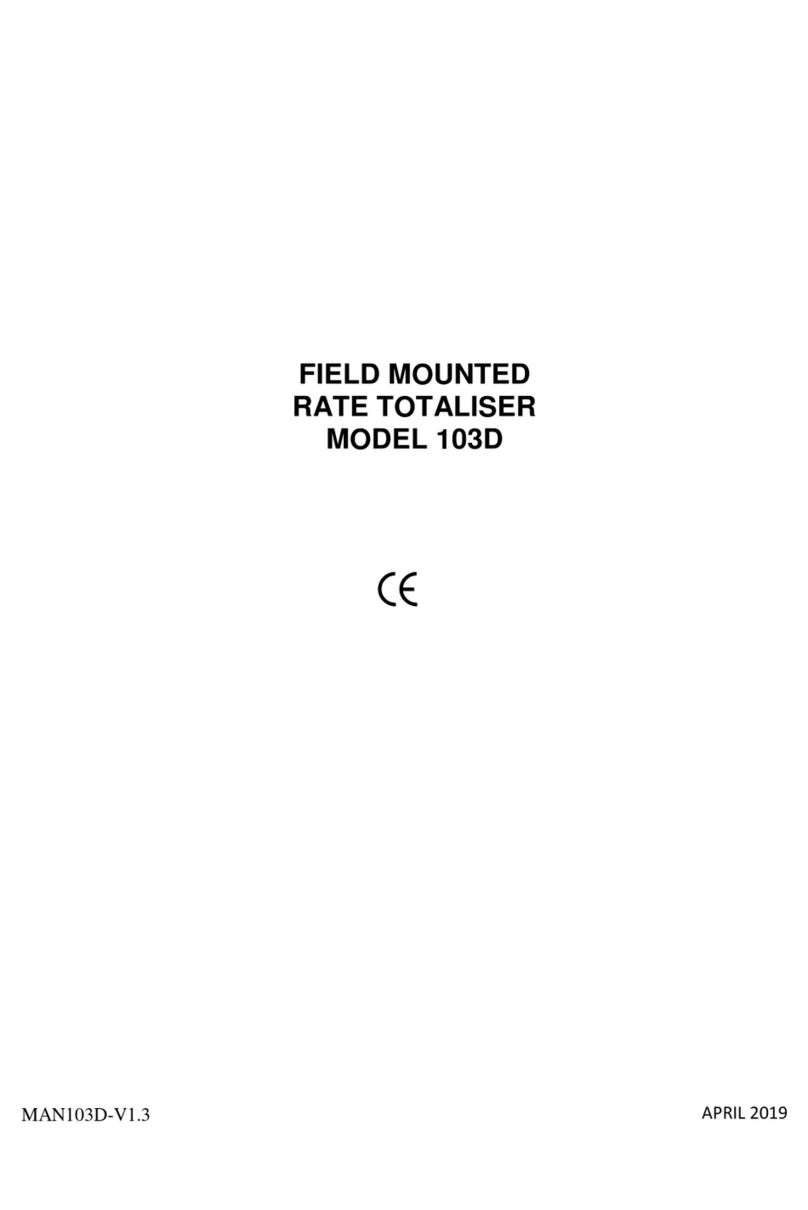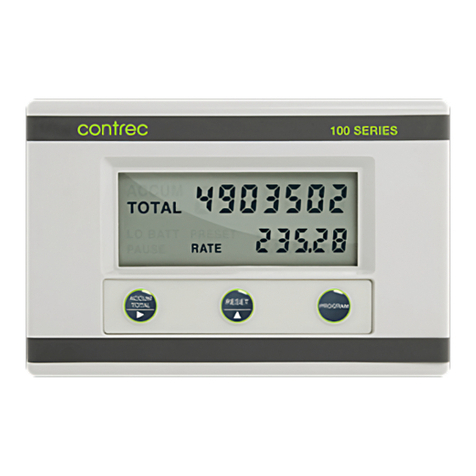
515 FA01 - 29 August 2021 v
1 Introduction
Features . . . . . . . . . . . . . . . . . . . . . . . . . . . . . . . . . . . . . . . . . . 1
Overview . . . . . . . . . . . . . . . . . . . . . . . . . . . . . . . . . . . . . . . . . . 1
Calculation Modes . . . . . . . . . . . . . . . . . . . . . . . . . . . . . . . . . . . 2
Calculations . . . . . . . . . . . . . . . . . . . . . . . . . . . . . . . . . . . . . . . 2
Analog Input Scaling . . . . . . . . . . . . . . . . . . . . . . . . . . . . . . . . . . 3
Displayed Information . . . . . . . . . . . . . . . . . . . . . . . . . . . . . . . . . 3
Main Menu Variables . . . . . . . . . . . . . . . . . . . . . . . . . . . . . . . . . . 3
Communications . . . . . . . . . . . . . . . . . . . . . . . . . . . . . . . . . . . . 4
Isolated Outputs . . . . . . . . . . . . . . . . . . . . . . . . . . . . . . . . . . . . 4
Relay Outputs . . . . . . . . . . . . . . . . . . . . . . . . . . . . . . . . . . . . . . 4
Software Configuration . . . . . . . . . . . . . . . . . . . . . . . . . . . . . . . . . 5
Limitations of Use . . . . . . . . . . . . . . . . . . . . . . . . . . . . . . . . . . . 5
Approvals . . . . . . . . . . . . . . . . . . . . . . . . . . . . . . . . . . . . . . . . 6
2 Specifications
Specification Table . . . . . . . . . . . . . . . . . . . . . . . . . . . . . . . . . . . . 7
3 Installation & Maintenance
Installation Instructions . . . . . . . . . . . . . . . . . . . . . . . . . . . . . . . . . . 9
Cleaning and Decontamination . . . . . . . . . . . . . . . . . . . . . . . . . . . . . 9
Panel Mounting . . . . . . . . . . . . . . . . . . . . . . . . . . . . . . . . . . . . . . 9
Electrical Connection . . . . . . . . . . . . . . . . . . . . . . . . . . . . . . . . . . 10
Rear Panel Connections . . . . . . . . . . . . . . . . . . . . . . . . . . . . . . . 10
Terminal Designations . . . . . . . . . . . . . . . . . . . . . . . . . . . . . . . . 11
Terminal Wiring Insulation . . . . . . . . . . . . . . . . . . . . . . . . . . . . . . 12
Relay Wiring . . . . . . . . . . . . . . . . . . . . . . . . . . . . . . . . . . . . . 12
Mains Power Wiring . . . . . . . . . . . . . . . . . . . . . . . . . . . . . . . . . 12
Inputs . . . . . . . . . . . . . . . . . . . . . . . . . . . . . . . . . . . . . . . . . . 13
Frequency Input Connection . . . . . . . . . . . . . . . . . . . . . . . . . . . . . 13
Analog Input Connections . . . . . . . . . . . . . . . . . . . . . . . . . . . . . . 14
Logic Input Connection . . . . . . . . . . . . . . . . . . . . . . . . . . . . . . . 15
Outputs . . . . . . . . . . . . . . . . . . . . . . . . . . . . . . . . . . . . . . . . . . 16
4-20 mA Output Connection . . . . . . . . . . . . . . . . . . . . . . . . . . . . . 16
Pulse Output Connection . . . . . . . . . . . . . . . . . . . . . . . . . . . . . . . 17
Control Relays (Alarms) . . . . . . . . . . . . . . . . . . . . . . . . . . . . . . . . . 18
RC Network for Interference Suppression . . . . . . . . . . . . . . . . . . . . . . 19
Communications . . . . . . . . . . . . . . . . . . . . . . . . . . . . . . . . . . . . . 20
COM-1 RS-232 Port . . . . . . . . . . . . . . . . . . . . . . . . . . . . . . . . . 20
COM-2 RS-485 Port Option . . . . . . . . . . . . . . . . . . . . . . . . . . . . . 20
COM-2 Ethernet Port Option . . . . . . . . . . . . . . . . . . . . . . . . . . . . 21
Mains Connection . . . . . . . . . . . . . . . . . . . . . . . . . . . . . . . . . . . . 21
Earthing and Shielding . . . . . . . . . . . . . . . . . . . . . . . . . . . . . . . . 21
Disconnection Device . . . . . . . . . . . . . . . . . . . . . . . . . . . . . . . . 21
Maintenance Instructions . . . . . . . . . . . . . . . . . . . . . . . . . . . . . . . . 21
Battery Replacement . . . . . . . . . . . . . . . . . . . . . . . . . . . . . . . . . 22
Battery Type . . . . . . . . . . . . . . . . . . . . . . . . . . . . . . . . . . . . . 22
Contents
515 FA01 - 29 August 2021
